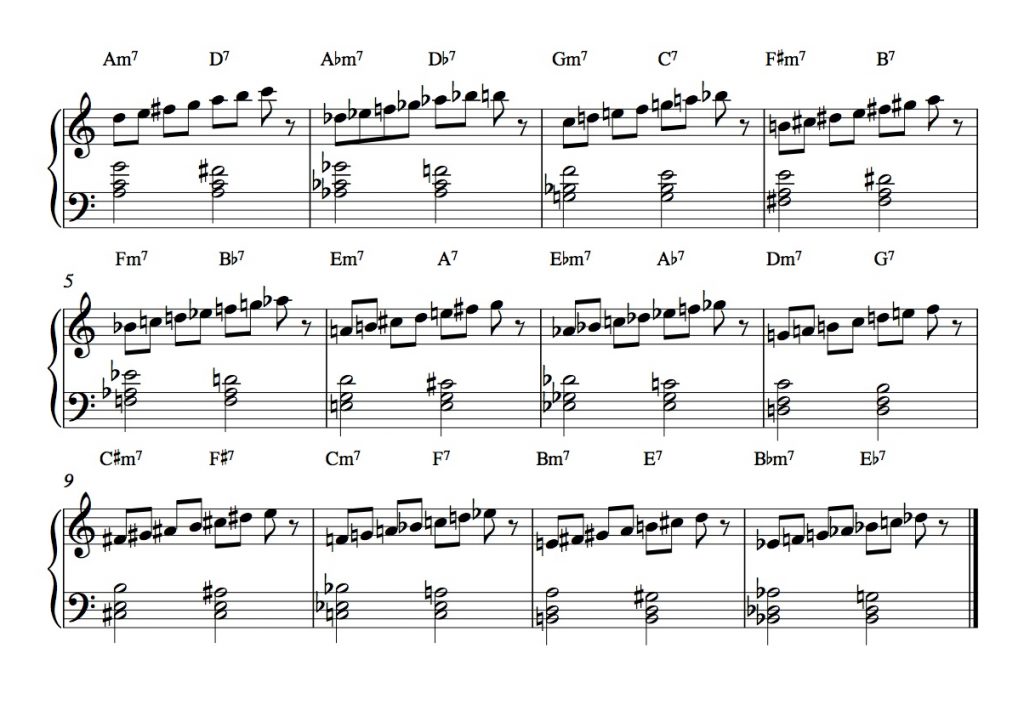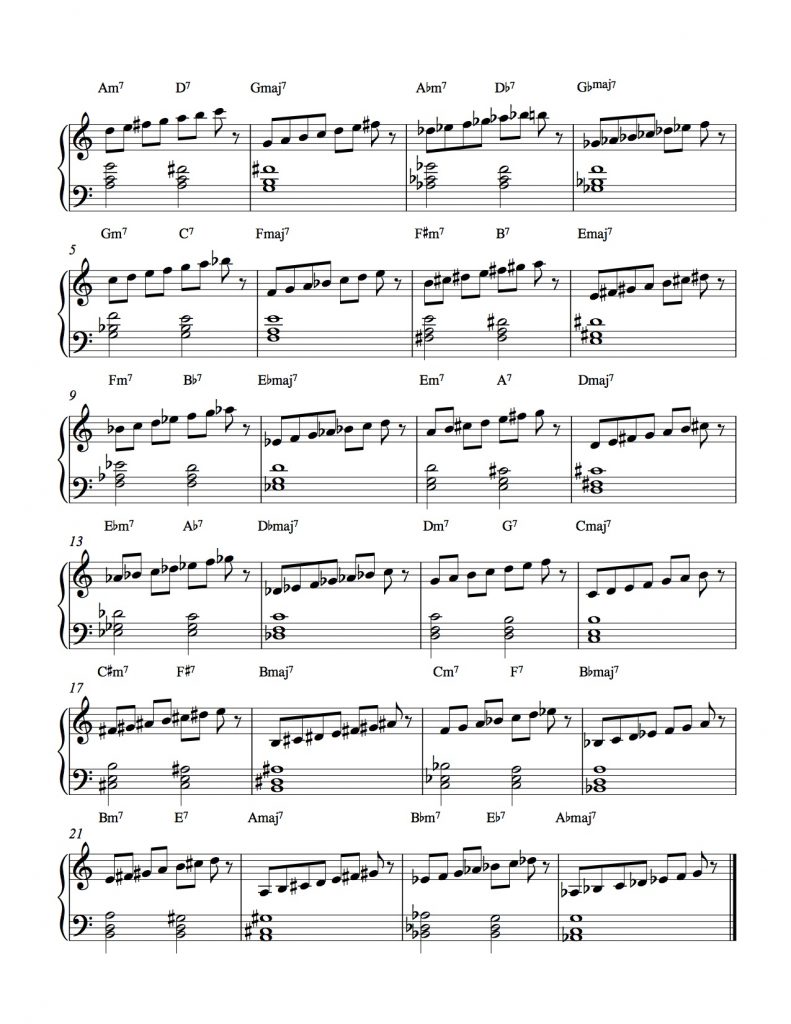Once you have become familiar with playing ii-V-I progressions in all keys in at least one voicing using your list of six tunes from the first post in this series, a possible next step is to practice the 7th scale (also known as the mixolydian scale or the major scale with a flatted 7th) using the ‘7 up’ pattern over ii-V progression as shown in the exercise below. The 7 up pattern stops short of an octave and implies the sound of a seventh chord more effectively than a scale that concludes on the root. (Like the tunes in the first ‘Root Systems’ post, all these scales should be learned with left-hand rootless voicings as well. Rootless voicings will be addressed specifically in a future series of posts.)
I learned the concept of running the 7th scale from the V chord over both the ii and the V from the teaching of Barry Harris. While many jazz educators relate the ii chord to the dorian scale and the dominant V chord exclusively to the 7th scale (sometimes also called mixolydian), it is ultimately more helpful to the improviser to emphasize the relationship between the two chords by using the 7th scale built off the root of the V chord over both the ii and the V, rather than isolating each chord with a separate scale. Many players in the bebop and hard bop periods used ii-Vs descending by half steps in tunes such as Charlie Parker’s ‘Blues for Alice’, Thelonious Monk’s ‘Ask Me Now’ and Miles Davis’ ‘Half Nelson’, as well reharmonizations such as the Mingus arrangement of ‘I Can’t Get Started’, and the substitutions on measures 3 and 4 of ‘Autumn Leaves’ used by Miles Davis and Wynton Kelly in their version of the tune. A number of modal ‘jam’ tunes, such as Herbie Hancock’s Chameleon, Tito Puente’s Oye Como Va, and Billy Cobham’s Red Baron, are built on using this pair of chords in a single key.)
When we add the I chord to each ii-V progression, it relates the ii and the V to the key from which they originate, and creates a three-chord progression that is one of the most common in jazz standard tunes. The major 7th chord can be outlined with the major scale starting on its root. When these three chords are outlined with these two scales we can see that each 7th scale uses the same group of notes as the major scale that follows it.
You can use these chord-scale combinations to create outlines of tunes that are based around major ii-V and ii-V-I progressions, such as Billy Strayhorn’s Satin Doll, Miles Davis and Eddie ‘Cleanhead’ Vinson’s Tune Up, Sonny Rollins’ Pent Up House, Tadd Dameron’s Lady Bird and John Coltrane’s Lazy Bird. (All these tunes, with the exception of Pent-Up House, can be found in The Real Book 6th Edition published by Hal Leonard.) Note that all these tunes also use longer ii-V progressions, for example, with the ii and V chords lasting a measure each. These longer progressions can be outlined by running each scale in two directions (either ‘7 up and down’ or ‘7 down and up’), as shown in this example with the ii-V-I progression in C: